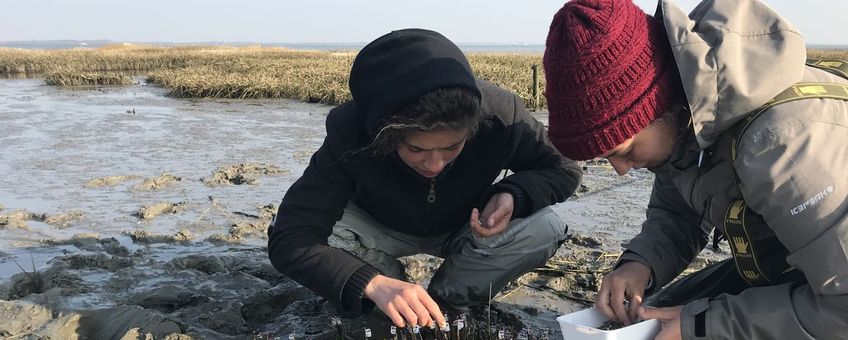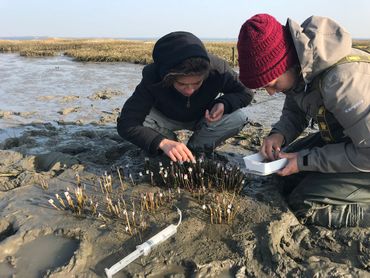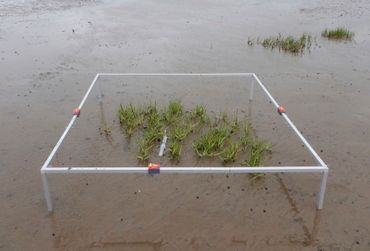
Young grass follows different growth strategies on salt marshes and in dunes
NIOZ Royal Netherlands Institute for Sea ResearchThe study was published on the same day last week in the two different scientific journals Ecosystems and Functional Ecology by researchers from NIOZ and the universities of Groningen and Utrecht.
Grasses are the main builders of dune and salt marsh ecosystems in north-western Europe. They form the first buffer against sea storms and floods, and are also the basis of an entire ecosystem. Like trees in a forest, they host dozens of species and thus enable many habitat functions.
Mature coastal grasses break the flow of water or wind, causing sand and silt to settle in the water or air. In this way the plants thus build up the landscape. But worldwide, dunes and salt marshes suffer from erosion, and are proving difficult to restore. PhD students Carlijn Lammers and Clea van de Ven studied how young grasses can establish themselves in the dynamic coastal zone. Ultimately, characteristics such as the spatial growth pattern of the grasses influence their own survival rate and thus the way they shape the landscape.
Traveling the European coast by camper van

Lammers and Van de Ven were pleasantly surprised that, after almost four years of research, both articles were by coincidence published on the same day. Valérie Reijers: "Together, they show that clonally expanding grasses can have specific growth patterns that deviate from random growth patterns, that some species have a flexible growth pattern and others not and that while some species adapt their growth pattern to maximize flow attenuation, others avoid physical stress."
Differences in dune form due to shoot growth
 In her publication in Ecosystems, Carlijn Lammers focuses on the influence of young specimens of sand couch (Elytrigia juncea) and marram grass (Ammophila arenaria) on dune formation. Sand couch was found to grow more scattered than marram grass, which grows in a wide variety of patterns. This difference also reflects their difference in dune formation: sand couch builds low and wide dunes and marram grass forms high and narrow dunes.
In her publication in Ecosystems, Carlijn Lammers focuses on the influence of young specimens of sand couch (Elytrigia juncea) and marram grass (Ammophila arenaria) on dune formation. Sand couch was found to grow more scattered than marram grass, which grows in a wide variety of patterns. This difference also reflects their difference in dune formation: sand couch builds low and wide dunes and marram grass forms high and narrow dunes.
Surprisingly, the spatial shoot organisation of sand couch was consistent regardless of the environment, while in marram grass the researchers found a wide variation in patterns. Lammers: "We suspect that sand couch weighs the risk of flooding against the potential benefits, such as higher nutrient supply and lower burial rate, while marram grass maximises sand uptake to avoid flooding altogether."
Salt marsh grass avoids stress at an early age
 In Functional Ecology, Clea van de Ven describes that English cordgrass (Spartina anglica) in salt marshes always clusters its shoots, regardless of environmental conditions. In a follow-up experiment, she shows that this growth form reduces erosion around the plant.
In Functional Ecology, Clea van de Ven describes that English cordgrass (Spartina anglica) in salt marshes always clusters its shoots, regardless of environmental conditions. In a follow-up experiment, she shows that this growth form reduces erosion around the plant.
Van de Ven: "The results show that young plants initially follow a shoot organisation that avoids physical stress. They do this by minimising their impact on the habitat, rather than immediately trying to modify the environment to their own advantage. The clustered shoot pattern of young plants looks different from that of mature plants. When plants are still young, clustering helps them to avoid stress."
Text: NIOZ
Photo's: Valérie Reijers; NIOZ; Clea van de Ven
